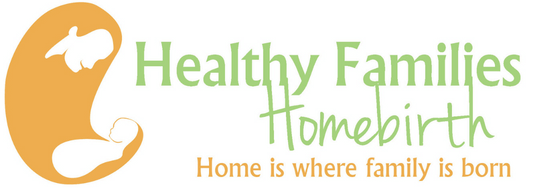

PHONE
303-718-1554
cheryl.furer@msn.com
OPENING HOURS
By Appointment Only
Menu

Definition: The removal of the foreskin anatomy of the penis; to cut off the clitoris and sometimes the labia of a female. This document only covers male circumcision.
Male Anatomy: The foreskin, or prepuce, is the outer layer of skin covering the glans of the penis. The foreskin is attached to the glans of the penis. A small blood vessel lies beneath the frenulum at the lower most attachment the foreskin. Retraction of the foreskin is minimal at birth, yet normally separates throughout childhood. The foreskin lies over the corona, the upper portion of the glans. The coronal sulcus is where the shaft of the penis and the foreskin meet.

History and Cultural tendencies:
Jewish and Muslim traditions have circumcised for centuries. Originally, only the tip of the foreskin was cut. About 300 B.C.-100 A.D. some young Jewish boys would conceal their cut by drawing the foreskin over it; partially to play in the Olympic games with the Roman boys. The rabbis of the time decided that removal of the entire foreskin would be more acceptable, so that the circumcised male could not appear uncircumcised.
Non-religious circumcision started during the 19th century as a way to try to prevent sexually transmitted diseases and to cure masturbation. In the U.S. circumcision became popular in the 1950s.
Explanation of procedure:
There are a variety of types of instruments available for use. Two popular types are the Gomco clamp and the Mogen clamp (shown above). There are risks and benefits of both types of clamps. Be sure you know which type of clamp will be used and that the practitioner is experienced in using it.
Clinical and observational research has shown that the surgery is painful to newborns. The American Academy of Pediatrics recommends that analgesia be given prior to the procedure. The subcutaneous ring block, using lidocaine, is supposed to be the best method of pain relief.
The surgery begins by positioning the baby to ensure that the area is visible and the arms and legs will not interfere with the procedure. The foreskin is retracted to check from any abnormalities and which size of clamp to use. First the adhesions that attach the foreskin to the glans are removed. Next, there is a cut made at the top of the foreskin to allow room for the clamp to be inserted. The bell of the Gomco clamp protects the glans of the penis from amputation.
The foreskin is lifted up and secured around the bell and clamped into place. The foreskin is then excised and removed. The correct excision is at the level of the coronal sulcus. Approximately two-thirds of the foreskin is removed. The cut should be made smoothly to remove all the foreskin and allow proper healing.
The bell is gently and slowly removed (the foreskin may naturally form an adhesion to the bell).
The penis should not have any bleeding visible. The previously interior glans will have a very reddened and raw appearance. The edges of the foreskin should fall just below the glans. Eventually this glandular area will harden to protect itself.
The baby will likely need extra comfort in the next 24 hours. He may have discomfort and irritability during voiding or when the diaper is changed. The baby may want to nurse more for often comfort. Within 24 hours there may be some swelling around the penis where the foreskin was. Healing should begin within 1-2 days and by 1 week the baby should not have much discomfort when changing the diaper. Be sure to wash your hands before and after each diaper and gauze change to reduce the chance of infection. A new gauze dressing with Vaseline should be replaced at every diaper change.
I feel that watching an actually circumcision will help give you full consent to what the procedure entails. This is a video for health professionals. The mother is in the room during the surgery. http://www.youtube.com/watch?v=bXVFFI76ff0
Circumcised Care:
A Vaseline gauze should be loosely placed around the edges of the skin. Signs and symptoms of infection include: redness, swelling, pus from the site or from the penis, fever over 101, lethargy, not feeding or voiding. Warm water gauze soaks on the penis twice a day and more frequent dressing changes may be needed for healing.
Do not use soap or alcohol near the penis. The baby should be sponge bathed for the first few days with only warm water. The penis should be kept dry with only Vaseline or A&D ointment applied. Tub baths can be resumed once the penis is healed completely and the umbilical cord has fallen off.
Contact the practitioner who performed the procedure of you see any signs of infection or sense there is something wrong with the baby.
Potential Complications and Risks:
Additional considerations:
This is a surgery. Vitamin K must be administered to make sure that the infant does not bleed excessively from the lacerations. Rituality, the surgery is done on the 8th day of the infant’s life. This is more ideal because the infant has started producing his own Vitamin K and has had time to transition from inside the uterus to outside the uterus.
Circumcision should be postponed if the child is preterm, has an abnormality on the genitalia, or is unhealthy in any way.
When circumcision is recommended:
The American Academy of Pediatrics and the American Medical Association agree that circumcision is not recommended for as a routine procedure. There may be some medical reasons for circumcisions, but these conditions generally do not occur within the first 3 months.
A rare condition called phimosis may lead to the circumcision surgery. Phimosis is the inability of the outer most preputial ring to stretch. The foreskin is unable to retract and edema and inflammation can be caused. This is usually not discovered until the male is a teenager, because it is normal that some males will not retract the foreskin themselves until they are older. Other treatments for this condition include steroid creams or a smaller slit that does not remove that whole foreskin.
Uncircumcised care:
Never allow someone else to retract your son’s foreskin! This can cause inflammation, edema, and adhesions. By the age of 3 about 80-90 percent of males can retract their own foreskin. Parents should teach him to retract the foreskin gently to clean any smegma away. The 3 R’s: Retract, Rinse, and Replace. Similar to teaching him to wash behind his ears or clean out his belly button.
Further educational resources:
http://www.circumcision.org/ Circumcision Resource Center
http://www.coloradonocirc.org/pamphlets.php Circumcision Resource Center of Colorado
http://www.cirp.org/ Circumcision Reference Library
References:
100+ Circumcision Deaths Each Year in United States. (n.d.) Circinfo.org. Retrieved from http://www.circinfo.org/USA_deaths.html
Davidson, M. R., London, M. L., Ladewig, P. W., & Olds, S. B. (2008). Olds’ maternal-newborn nursing & women’s health across the lifespan (8th ed.). Upper Saddle River, NJ: Pearson Prentice Hall.
Jewish Circumcision Resource Center (n.d.). Jewish Circumcision Resource Center. Retrieved May 1, 2012, from http://www.jewishcircumcision.org/info.htm
Marcell, A. V., & E. (2011, December 01). Circumcision Policy Statement. Pediatrics.
Medical Statements on Circumcision. (n.d.). Circumcision Information Resource Center of Colorado. Retrieved May 1, 2012, from http://www.coloradonocirc.org/medical.php
Varney, H., Kriebs, J. M., & Gegor, C. L. (2004). Varney’s midwifery. Sudbury, MA: Jones and Bartlett Pub.
***This is general information. Please speak to your health care provider about your unique health needs.

“I believe in continuity of care, which means that as your midwife, I’m here to support you throughout your pregnancy, birth, up until your baby is a toddler (really!) and beyond…”


Proud Practitioner with BeHerVillage. Create a Registry Here.
Copyright © 2022 Healthy Families Homebirth – Home is Where Family is Born | All Rights Reserved | Website by Cheryl Furer & Precy Onasa